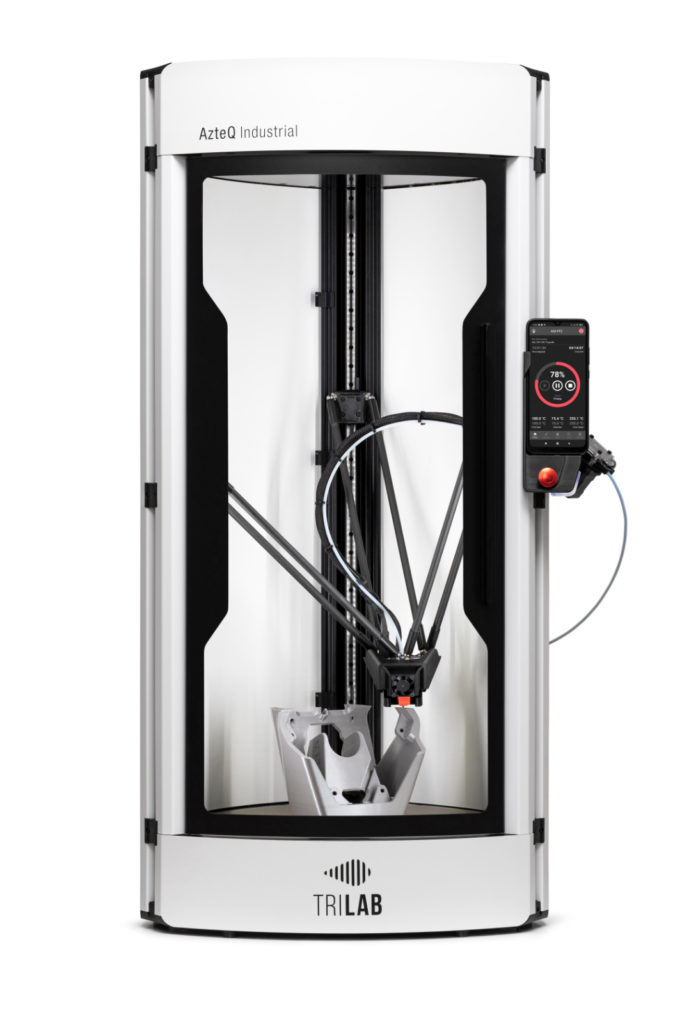
“Trilab produces high-quality 3D printers for the corporate sector and their brand is very well established in this area. Our machines are aimed more towards hobbyists and they are open-source. This approach may be limiting in corporate and industrial sectors,” Prusa Research founder Josef Průša stated. “We found that we complement each other perfectly. We have a great B2C system – without any intermediaries, we’re capable of distributing our 3D printers and materials to the entire world directly from our HQ in Prague. Trilab has business partners not only in the EU but also in Japan, Izrael, Canada, and Australia. Their business experience is completely different than ours,”
 I’m so frustrated that people don’t understand just how formidable Prusa Research is as a competitor. Their QA is amazing, as is the overall quality of their systems. At the same time, they deliver products with extremely good value for the money. They survive and thrive in a desktop segment overrun with people that copy their printer and sell if for $200. If they can do well in that market, then eventually, they’ll do well in your market.
I’m so frustrated that people don’t understand just how formidable Prusa Research is as a competitor. Their QA is amazing, as is the overall quality of their systems. At the same time, they deliver products with extremely good value for the money. They survive and thrive in a desktop segment overrun with people that copy their printer and sell if for $200. If they can do well in that market, then eventually, they’ll do well in your market.“At the beginning of 2021, we realized that if we were to expand into more markets and accelerate our growth, we needed a strategic partner. After months of negotiations with many foreign companies, we came to a somewhat surprising conclusion: the best solution is to join forces with another Czech company – PrusaResearch,”Trilab CTO Vojtěch Tambor stated, “Advanced materials, which Josef Průša develops under the Prusament brand, are a perfect match for our 3D printers – and there’s great potential for future development. Already, our customers are excited to see 3D prints made on our machines with Prusament PC Blend,”
Subscribe to Our Email Newsletter
Stay up-to-date on all the latest news from the 3D printing industry and receive information and offers from third party vendors.
You May Also Like
Printing Money Episode 17: Recent 3D Printing Deals, with Alex Kingsbury
Printing Money is back with Episode 17! Our host, NewCap Partners‘ Danny Piper, is joined by Alex Kingsbury for this episode, so you can prepare yourself for smart coverage laced...
Insights from Cantor Fitzgerald on AM’s Q1 2024 Landscape
A recent survey by Cantor Fitzgerald sheds light on the persistent challenges within the additive manufacturing (AM) industry in the first quarter of 2024. Based on responses from 38 industry...
3D Printing Financials: Xometry’s Scaling up and Strong Start to 2024
Xometry (Nasdaq: XMTR) kicked off 2024 with strong results, boosting its marketplace and technology to new heights. Both revenue and gross margin soared, fueled by an expanding global network of...
3D Printing Financials: Desktop Metal Targets Recovery Amid Net Losses and Revenue Downturn
Despite facing a decline in revenue and the persistent challenges of a tight economic climate, Desktop Metal (NYSE: DM) is making strides toward operational efficiency. The first quarter of 2024...
































